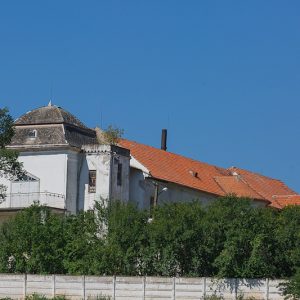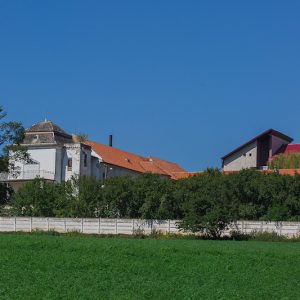- National Monument Number:
- -
- Address:
- Galda de Jos
- Dated to:
The ancestor of the Kemény family, Simon, died a heroic death in Alsógáld, and is supposedly buried there as well. A manor, most probably built in renaissance style, once stood in the settlement (during the 17th century). The exterior defensive walls of the building can still be seen on the eastern side. Only one small turret and part of its continuation remain of the old structure. The original manor was most probably built by Kemény Boldizsár, the father of Prince Kemény János, and Boldizsár’s son, Simon, during the first half of the 17th century, as they were close to the regional centre of the renaissance, Gyulafehérvár (Alba Iulia).
The ground floor of the main facade is segmented by a large archway, while the upper floor is segmented by four segments protruding from the building. These segments are three-sided, and are reminiscent of slices from hexagonal towers. This tower-like aspect is made complete with their independent hexagonal roofing. A risalits with a baroque gable protrudes slightly after every second window from upper floor of the posterior facade. An open terrace with metal railings, which rests on two rectangular pillars, is located at the upper floor of one of the lateral facades. The Romanian peasantry destroyed most of the castle during the First World War. After the war, Baron Kemény Árpád II (1867-1941) therefore sold the castle to the lawyer Aurel Albini, who was also the mayor of Nagyenyed/Aiud, for two decades. The baron later sold the lands of the estate as well to the farmers of Tövis/Teiuș. After its nationalisation, economic institutions of the state functioned in the building. It then became the working place for the political prisoners from Nagyenyed/Aiud for a short period of time. Today the building serves as an asylum. The psychiatric institution has since constructed additional, modern facilities in its vicinity as well. The descendants of Aurel Albini, the lawyer, are requesting the return of the castle.












